Key takeaways:
- User data handling requires a balance between personalization and privacy, emphasizing the importance of transparency to build user trust.
- A single data breach can severely damage a company’s reputation, highlighting the necessity for stringent security measures and respect for user privacy.
- Best practices for data collection include clarity in communication, transparency about data usage, and an opt-in approach to improve data quality.
- Implementing techniques like data anonymization and continuous improvement can enhance user data protection and foster trust in the digital landscape.

Understanding user data handling
Understanding user data handling starts with recognizing the sensitive nature of the information we collect. I recall a time when I had to explain to a team why a simple data breach could erode user trust overnight. It made me realize that every data point we gather isn’t just a statistic; it represents a person’s privacy and security.
Moreover, the sheer variety of data types—like personal details, preferences, and browsing behavior—can leave developers feeling overwhelmed. Have you ever been unsure about what data to collect? I’ve been there, grappling with the balance between personalization and privacy. That’s why it’s essential to approach data handling with a critical eye, ensuring that we only keep what’s necessary and beneficial for our users.
Finally, being transparent about how we use data can set us apart in a crowded market. When I started sharing our data practices openly, I noticed a shift in user engagement. People appreciate honesty, don’t they? By fostering a culture of transparency, we not only protect user data but also build a community of trust that enhances our brand reputation.
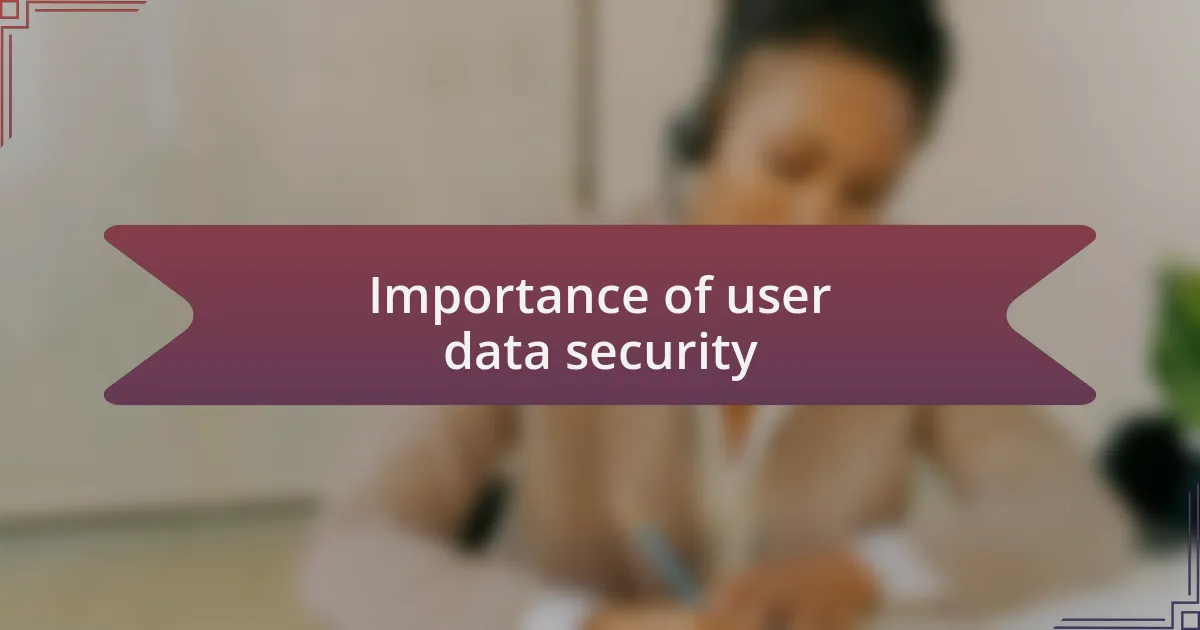
Importance of user data security
When we talk about user data security, it’s crucial to remember that a single breach can lead to devastating consequences. I once witnessed a startup I admired lose its credibility overnight after an incident that exposed user information. It was a stark reminder of the fragility of trust and how vital it is for us to safeguard our users’ data at all costs.
It’s not just about protecting data; it’s also about respecting the people behind that data. I often think about how I would feel if my personal information was mishandled. It’s an uncomfortable thought, one that drives me to implement stringent security measures. Every user deserves the peace of mind that their information is safe, and it’s on us to provide that assurance.
Furthermore, prioritizing data security can set a company apart in an increasingly competitive marketplace. I’ve experienced firsthand how clients are more willing to engage with businesses that demonstrate a strong commitment to security. It’s simply compelling; when users feel secure, they tend to become more loyal, and that long-term relationship is invaluable. Isn’t it inspiring to think about how trust can always lead to growth?
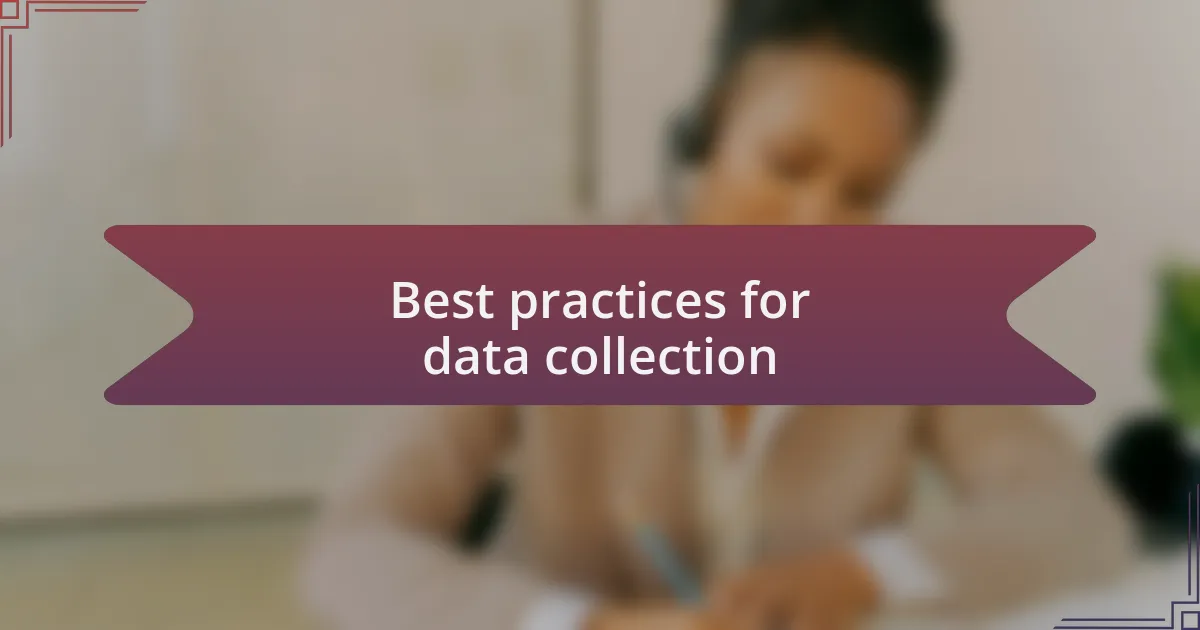
Best practices for data collection
When it comes to data collection, clarity is key. I remember launching a survey for user feedback and realizing that vague questions yielded vague answers, leaving me with more confusion than insight. It’s essential to be specific and direct, ensuring that users know exactly what information is needed and how it will be used. This not only streamlines the process but also empowers users to provide meaningful input.
Additionally, transparency plays a vital role. I once attended a webinar where the speaker emphasized how open communication about data collection can foster trust. It struck a chord with me. When users understand why their data is being collected and how it will benefit them, they’re more inclined to participate. Have you ever hesitated to share your information because you weren’t sure how it would be used? I certainly have, and that’s exactly what we need to avoid.
Lastly, implementing an opt-in approach rather than an opt-out is crucial. I recall a project where we switched to an opt-in model for data collection, and the quality of the data improved significantly. Users who actively choose to share their information tend to provide more valuable insights. This not only enhances the quality of the data we collect but also respects the user’s autonomy, making them feel valued and engaged in the process. How often do we stop to consider the impact of giving users a choice?
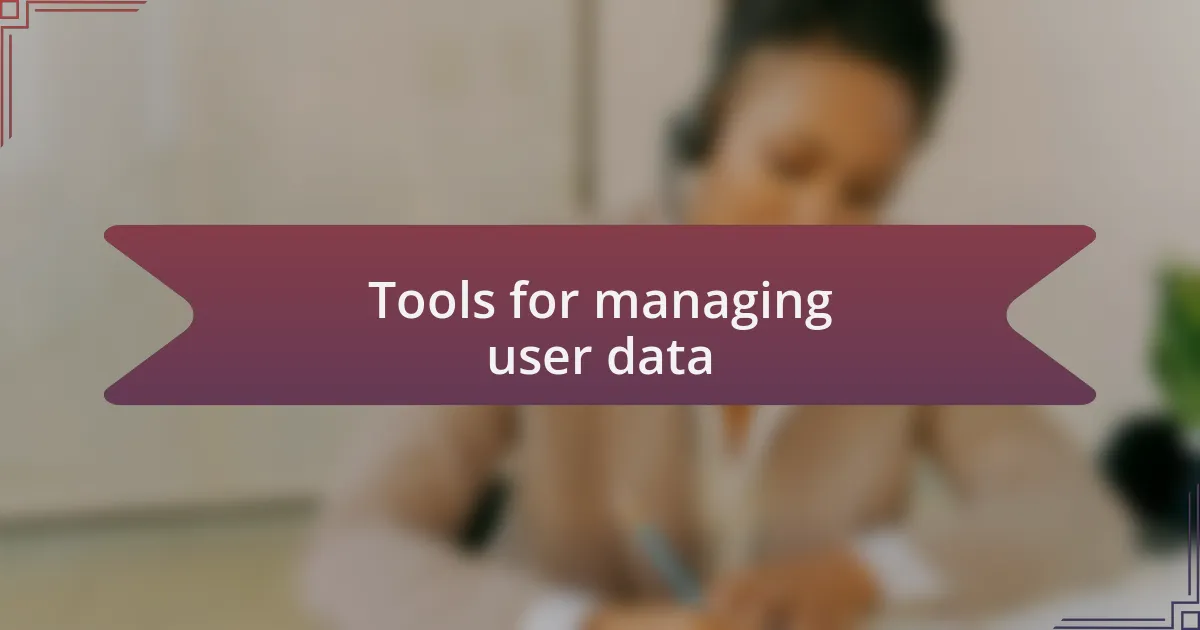
Tools for managing user data
When it comes to managing user data, I find that using tools like Google Analytics and HubSpot can be incredibly effective. I remember integrating Google Analytics into my website, and the wealth of information I gleaned was eye-opening. The ability to track user behavior in real-time helped me make data-driven decisions that significantly improved user engagement. Have you ever wondered how your visitors actually interact with your site? Analytics can provide those answers.
Another essential tool I have utilized is a customer relationship management (CRM) system, like Salesforce. The first time I set up Salesforce, I was amazed at how it centralized all user interactions, allowing me to tailor communications based on user preferences. It’s fascinating to see how a well-structured database can inform personalized marketing strategies. Do you remember how impactful a personalized message can feel? It’s often the difference between a fleeting interaction and a long-lasting relationship.
I also lean heavily on data encryption and privacy tools. In a world where data breaches seem all too common, I once invested in a robust protection system that not only secured user data but also built trust with my audience. I recall a user reaching out to express appreciation for our commitment to their privacy, which reaffirmed my belief in prioritizing security. Isn’t it comforting to know that users feel safe engaging with your platform? These tools not only manage user data effectively but also cultivate lasting trust with your audience.
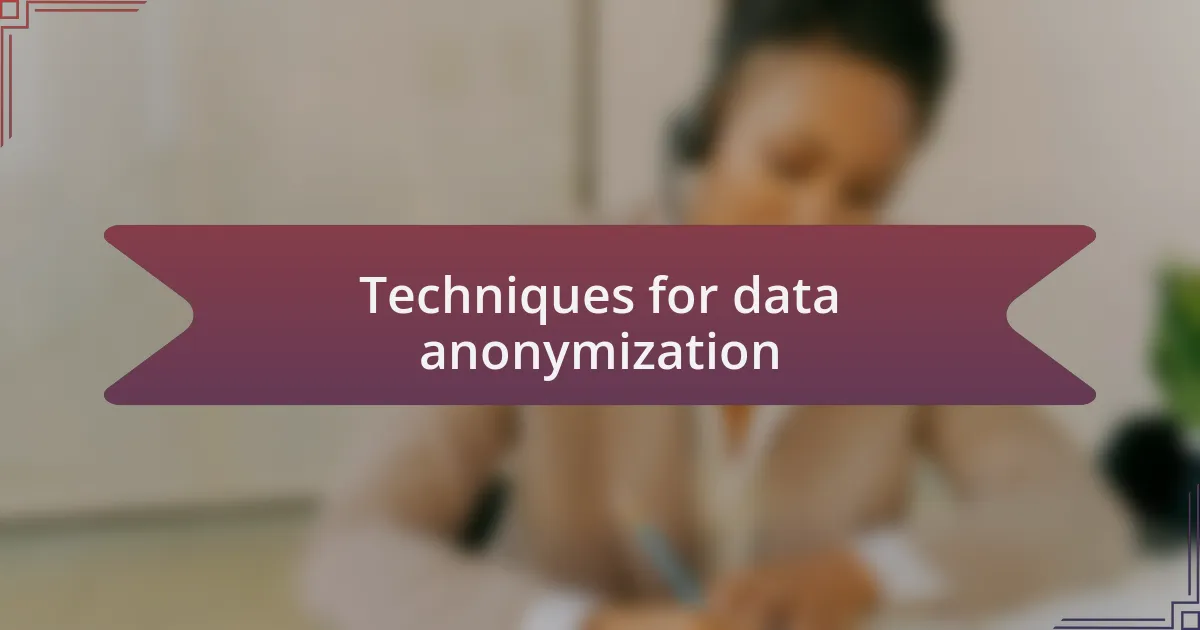
Techniques for data anonymization
Anonymization involves techniques that obscure personal identifiers, making it impossible to trace data back to an individual. I remember working on a project where we implemented data masking, a method that replaced sensitive information with fictional data, allowing us to conduct analysis without compromising user identities. It was a relief to know that our users’ real data remained untouched and secure, all while still enabling us to gather valuable insights.
Another effective technique I’ve explored is differential privacy. This approach adds random noise to the data, ensuring that individual user information cannot be deciphered while still providing useful aggregate insights. I vividly recall discussing differential privacy with my team; it felt revolutionary knowing we could still learn from user trends without putting their identities at risk. Have you ever felt the tension between gaining insights and protecting privacy? It’s a balancing act that this method helps us navigate.
I’ve also found that using generalization can be quite beneficial. By transforming specific user data into broader categories, I can process the information without revealing personal details. For instance, instead of storing exact ages, aggregating users into age ranges allowed us to respect privacy while still understanding demographic trends. Isn’t it fascinating how we can glean meaningful information from a broader perspective while staying compliant with privacy standards? Every effort in anonymization reinforces our commitment to ethical data handling.
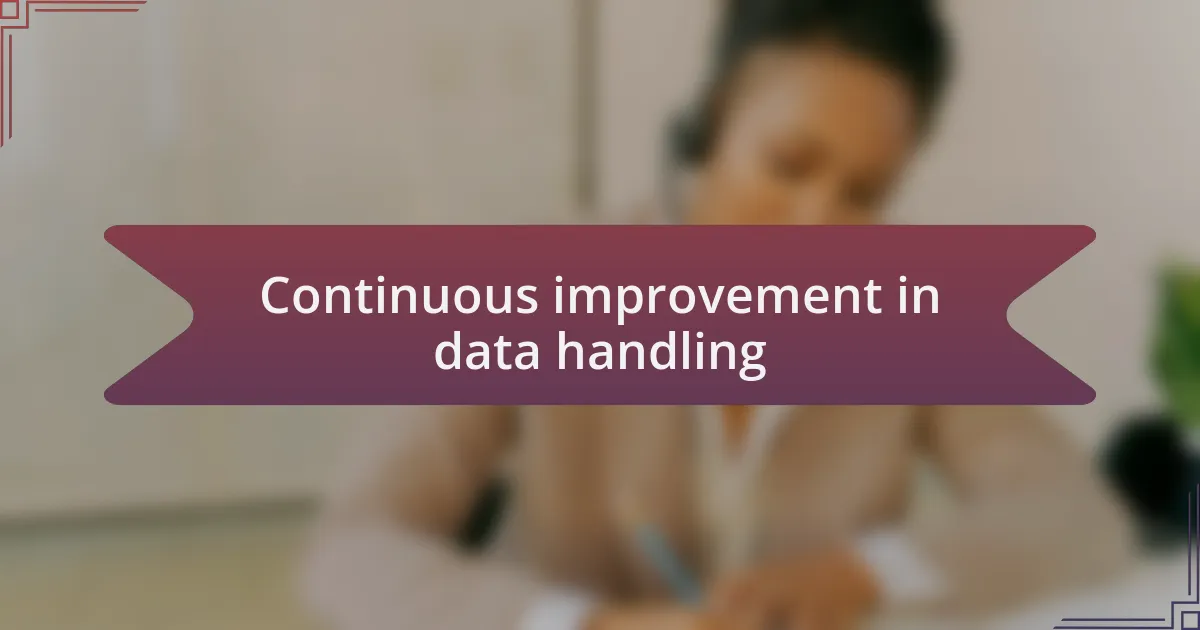
Continuous improvement in data handling
Continuous improvement in data handling is an ongoing journey. I often reflect on how crucial it is to evaluate and adapt our practices regularly. For example, during a recent audit of our data management practices, we uncovered several areas ripe for enhancement. It was a humbling moment, realizing that even small adjustments could significantly enhance our users’ experience and security.
A vital aspect of this continuous improvement approach is soliciting feedback from users. I remember when we introduced a new data handling protocol and actively sought user opinions on the changes. The input we received was enlightening; it helped me understand their concerns and perspectives more profoundly. Have you ever wondered how much your users could teach you? These insights not only refined our methods but also fostered a sense of trust and collaboration within our community.
Moreover, keeping up with technological advancements is essential in data handling. I’ve been amazed by how quickly tools and frameworks evolve, which can dramatically enhance data protection measures. When we adopted a new encryption technology, I felt a renewed confidence in our ability to safeguard user data effectively. It made me curious—what new innovations might be just around the corner that can elevate our data practices even further? Each step forward reassures me that we are committed to not just meeting standards but exceeding them.